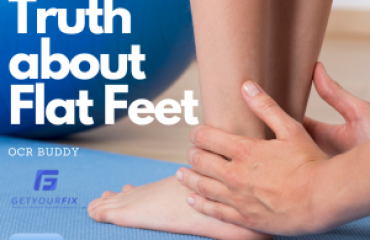 Many running injuries happen annually. Depending on the research you look at, between 50-75% of runners get injured every year. Many of those are chronic injuries…and also what I call preventable injuries.
Many running injuries happen annually. Depending on the research you look at, between 50-75% of runners get injured every year. Many of those are chronic injuries…and also what I call preventable injuries.
Running in itself typically does not cause injuries (unless you trip over something and injure yourself) and yet many runners tend to end up with injuries – foot, ankle, lower leg, knee, thigh, hip, etc. Most of these injuries get referred to as an ‘overuse’ injury, which is true to a point, but not for the reasons you think.
Not all of these injures are preventable, but I can say a good 90+% of them are. The three common reasons I see chronic injuries occur is 1) too much, too soon, 2) lacking muscular endurance, and 3) technique faults.
Too Much, Too Soon
This is an all too common error people make with training that gets them injured. Whether it is because you are training for a race or because you are coming off an injury, you get excited and start progressing too quickly.
This can look like a number of things, including
- Increasing mileage too quickly
- Adding distance and more training days to your schedule at the same time
- Adding speed workouts and hill workouts to your schedule at the same time
- Or doing a combination of all of the above
While it is important to add all those things in over time, when you add too many things at once, the body cannot adapt to the increased stresses properly, which can result in an injury.
Lacking Muscular Endurance
Are you in a situation where every time you get to a certain mile point during a run you experience pain somewhere? Anything less than that, you are fine but hit that specific number and BOOM! Pain hits!
I often attribute this to a muscular endurance issue, meaning your body maintains good strength and control up to a certain point. After that point, the body is unable to stabilize and control itself as well, causing your running form to change. These running form changes can create inappropriate torque and forces in the body, specifically the legs. When that happens, pain sets in.
This doesn’t mean that you are destined to experience pain over that certain point forever or that you need to give up running. It simply means it would be beneficial for you to spend some time figuring out what breakdown is occurring and address it appropriately.
Technique Faults
As mentioned in the previous section, when form breaks down it can create inappropriate torque and forces in the body. Often times, though, running technique faults are an issue from the start, not later on into the run.
Your body will allow these faults for a while, maybe even years, but eventually it will give up and create pain so you can finally address the issues you have been creating in your body. Many times (not always), these issues will show up as you change something in your training – increasing mileage, adding speed work, adding hill training, etc.
There is not necessarily a ‘perfect’ way to run, but there are ‘better’ ways to run. Many running faults create more torque and forces than necessary in the legs. By taking time to discover those faults and correct the faults, you can improve your running technique and therefore reduce the torque and forces through the legs. Reduced torque and forces translate to decreased injuries.
If you are consistently getting injured, I encourage you to take a deeper look at what might be contributing to your injuries. You can break out of the injury cycle you are in if you take time to find the cause and fix it.
Written by Brianne Showman. Brianne is a physical therapist and running coach with Get Your Fix Physical Therapy And Performance. Her focus is on helping athletes resolve injuries in less time by getting to the root of the problem, improving movement patterns, and incorporating proper training to help the body to move more efficiently, more powerfully, and in less injury-prone ways.









